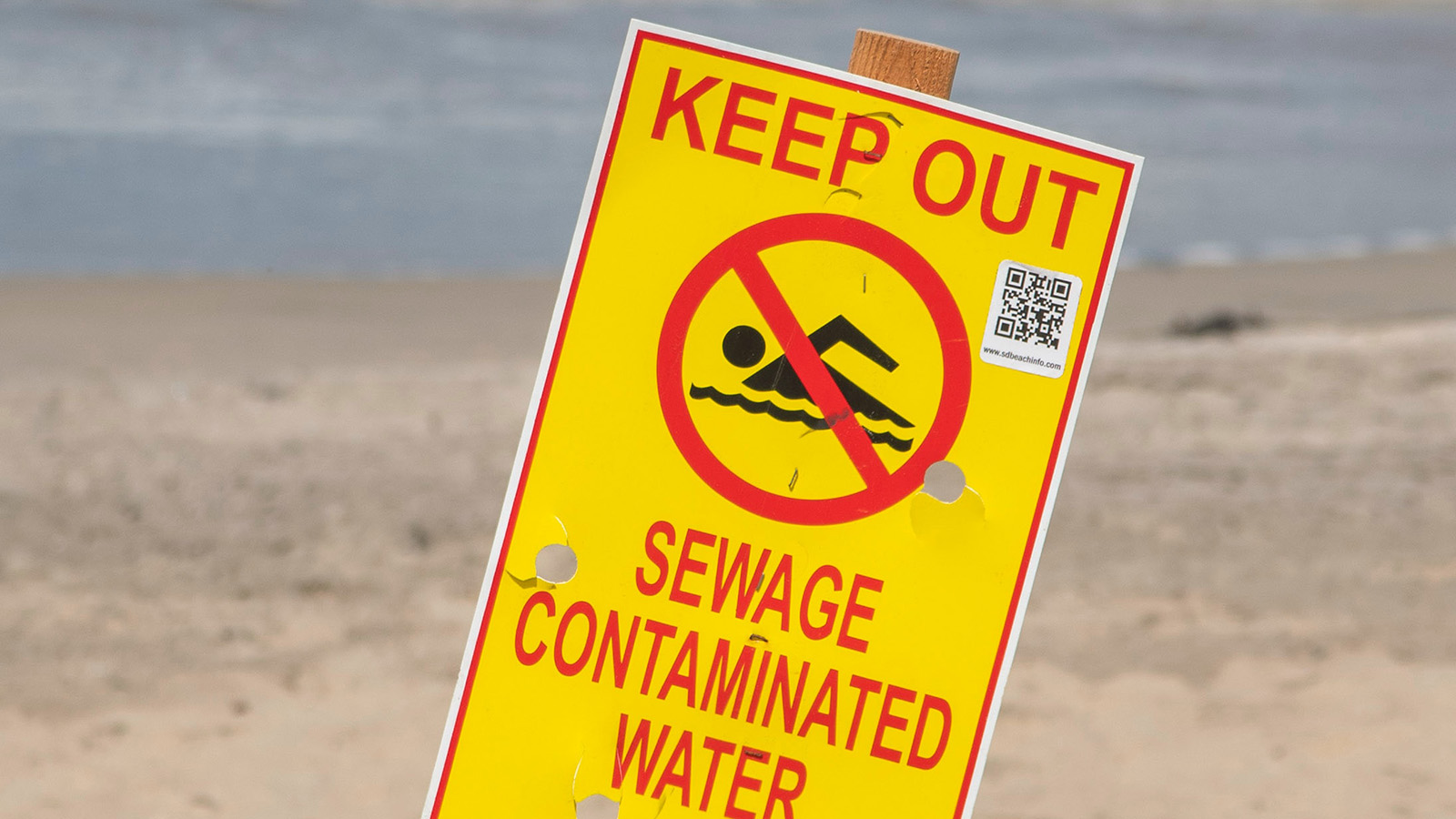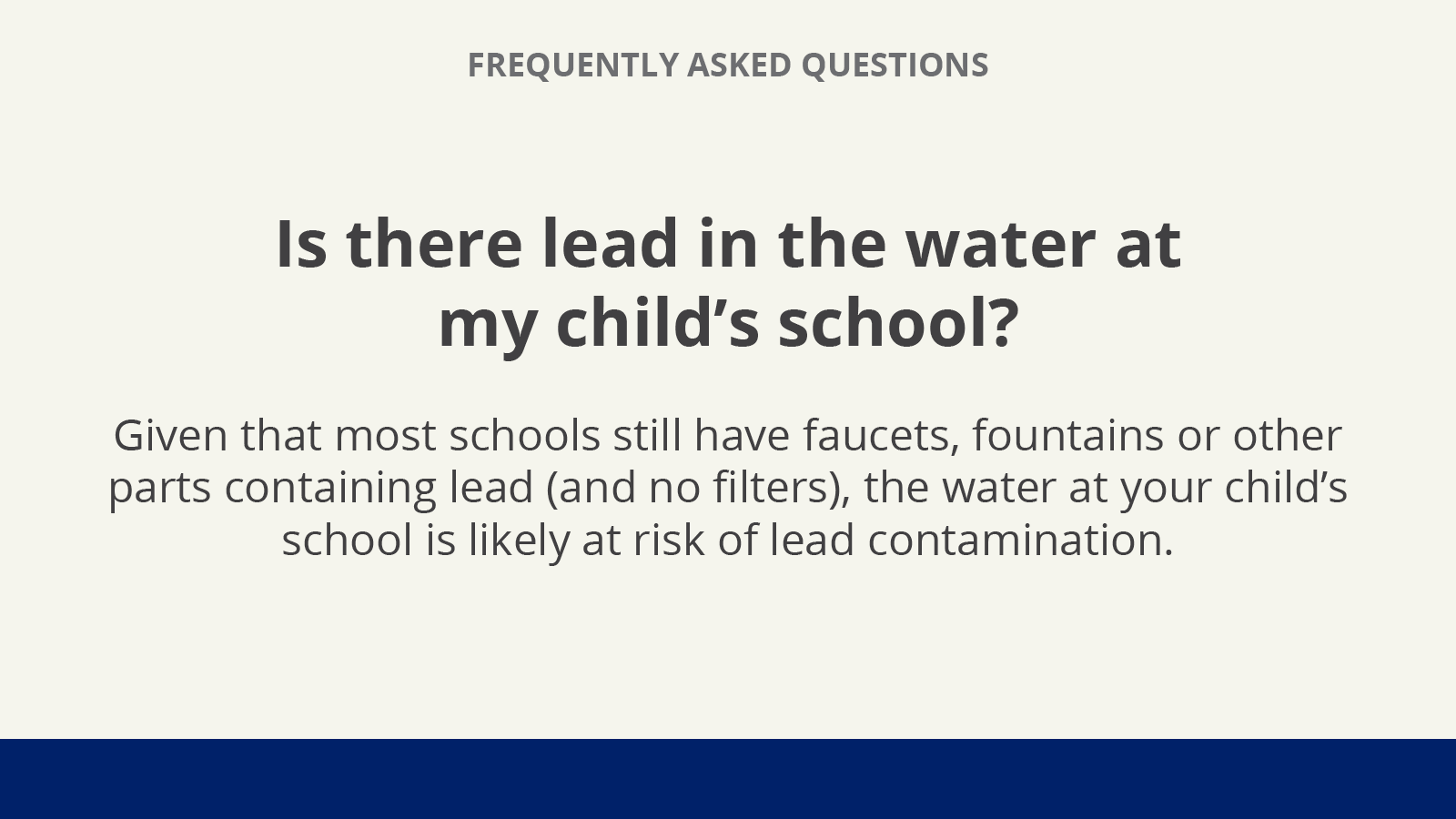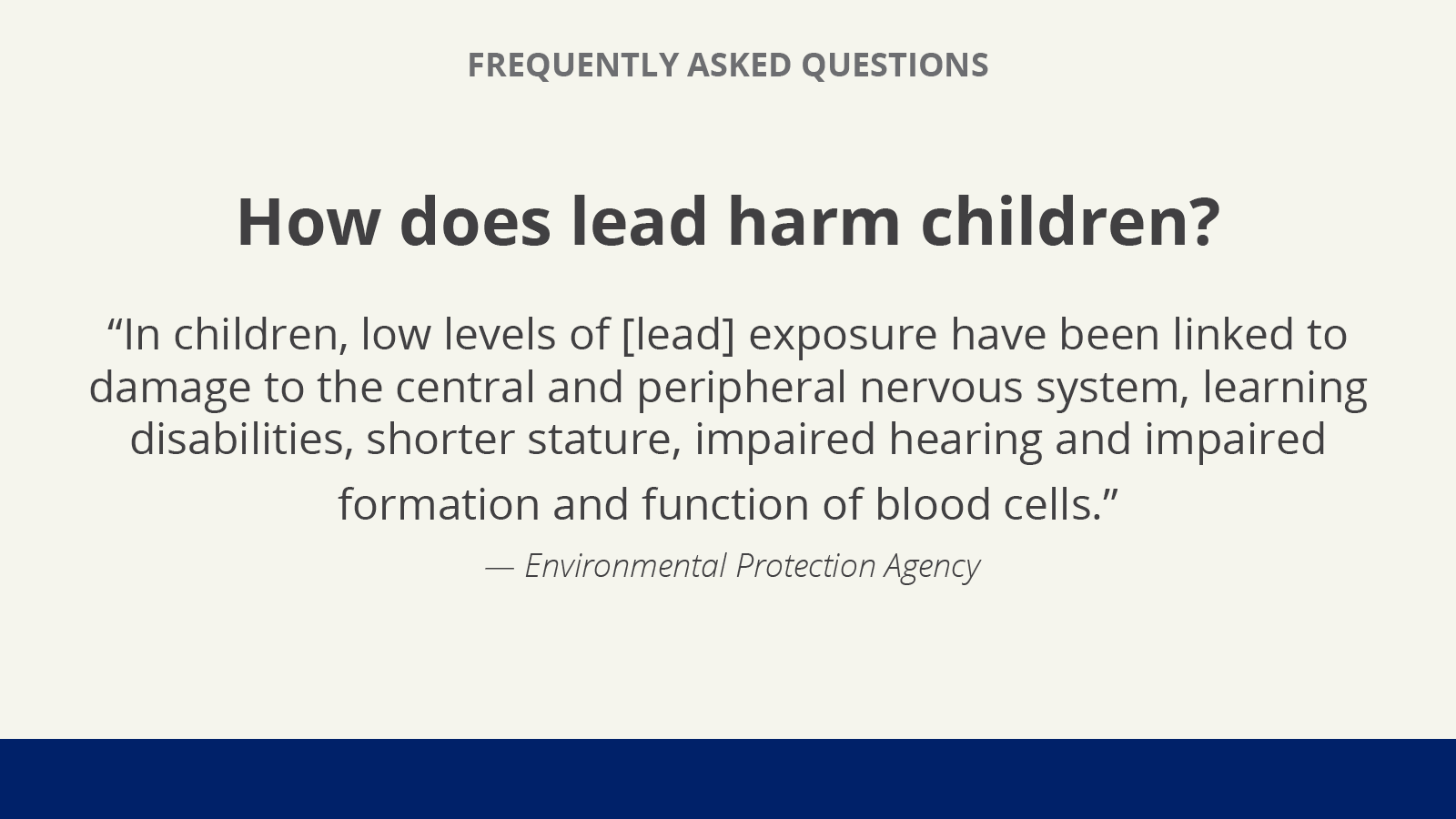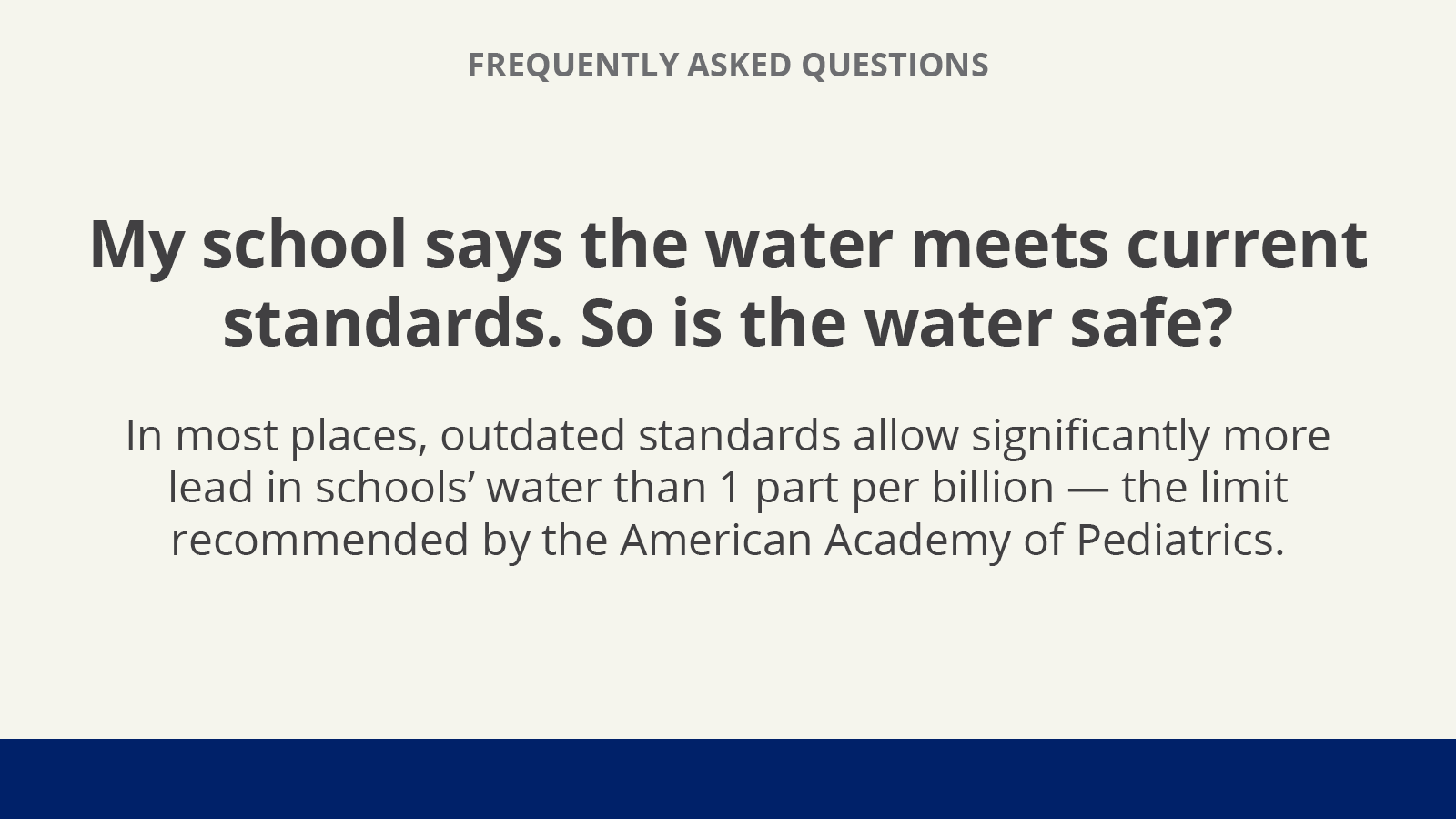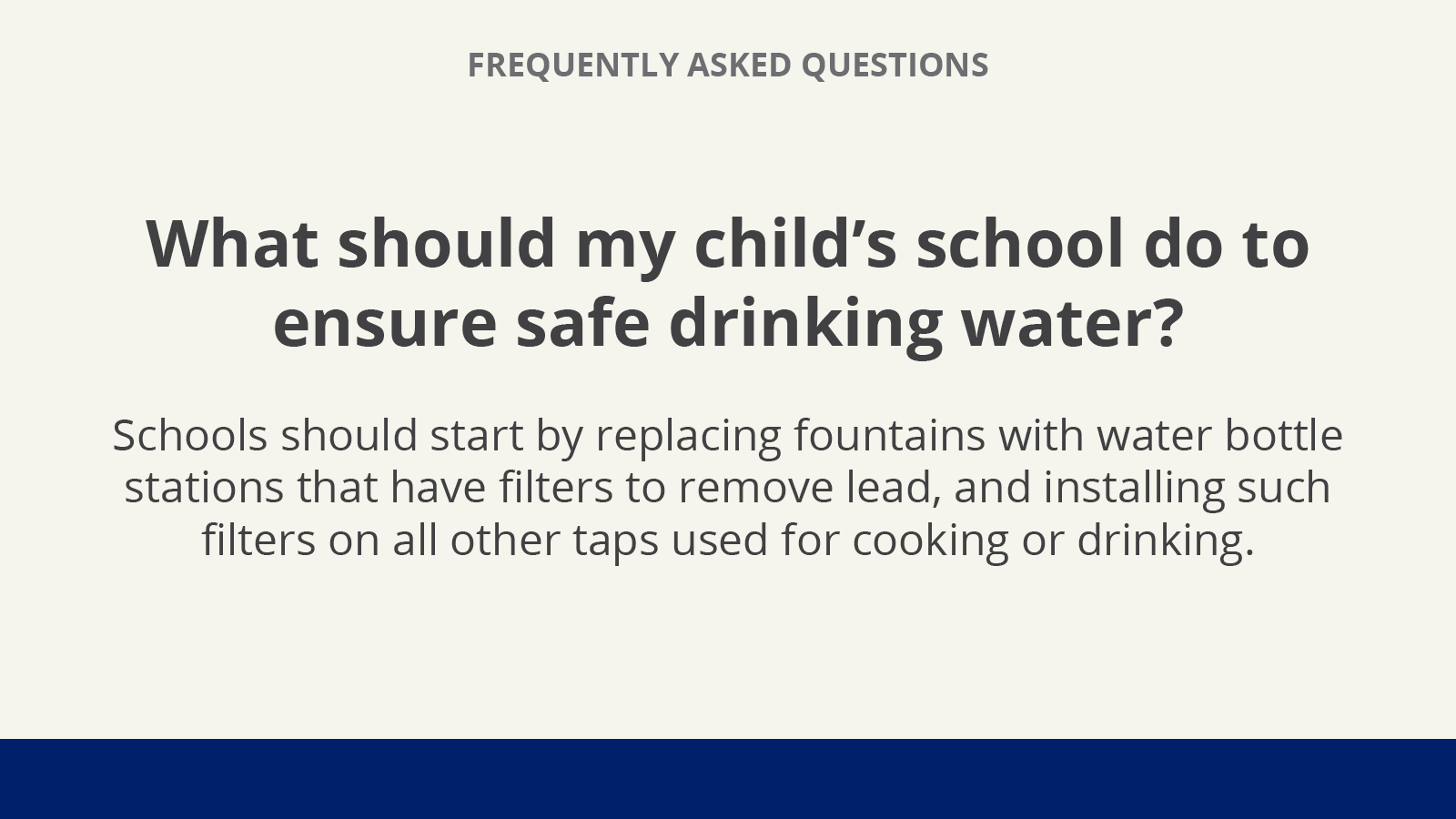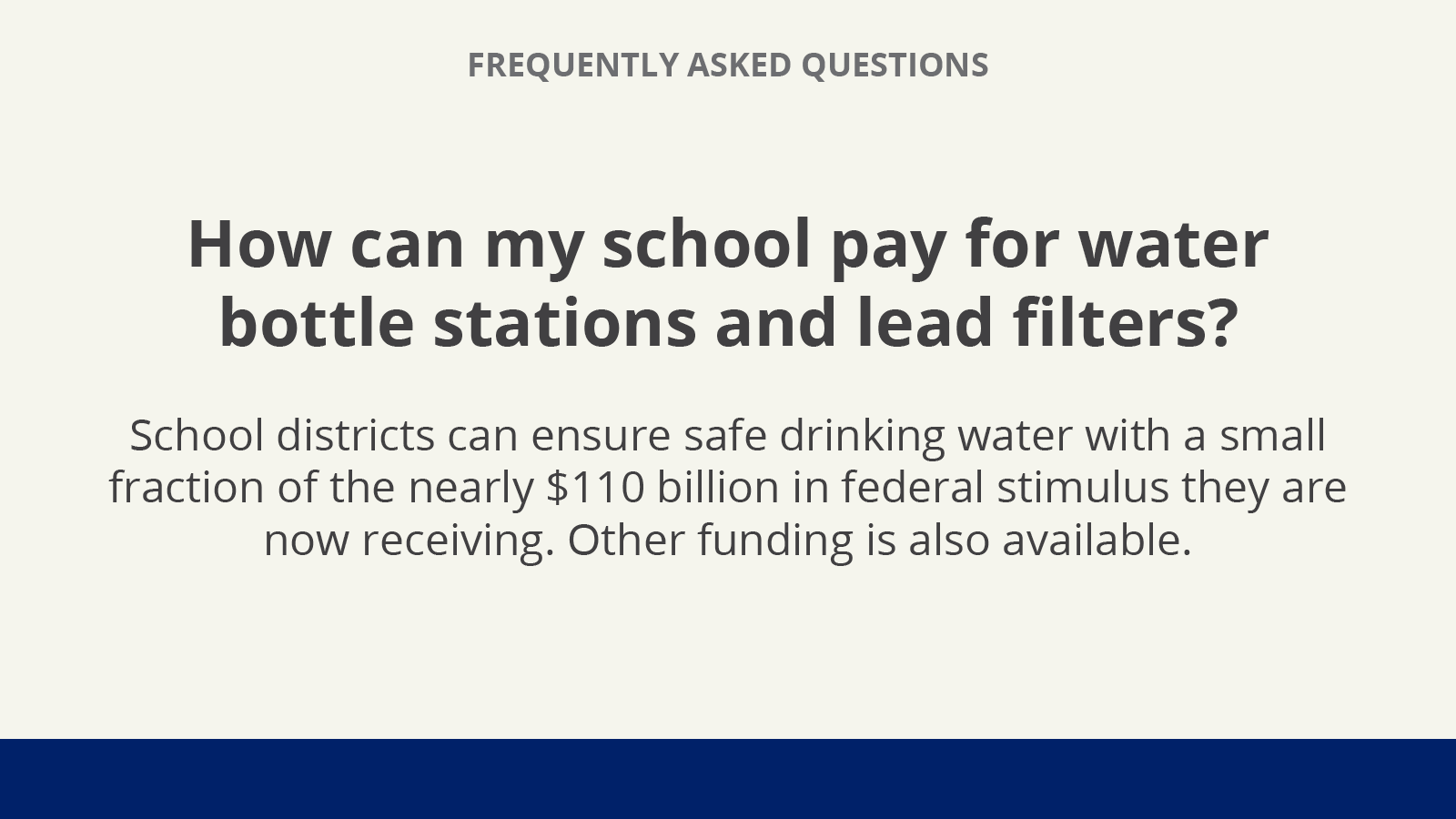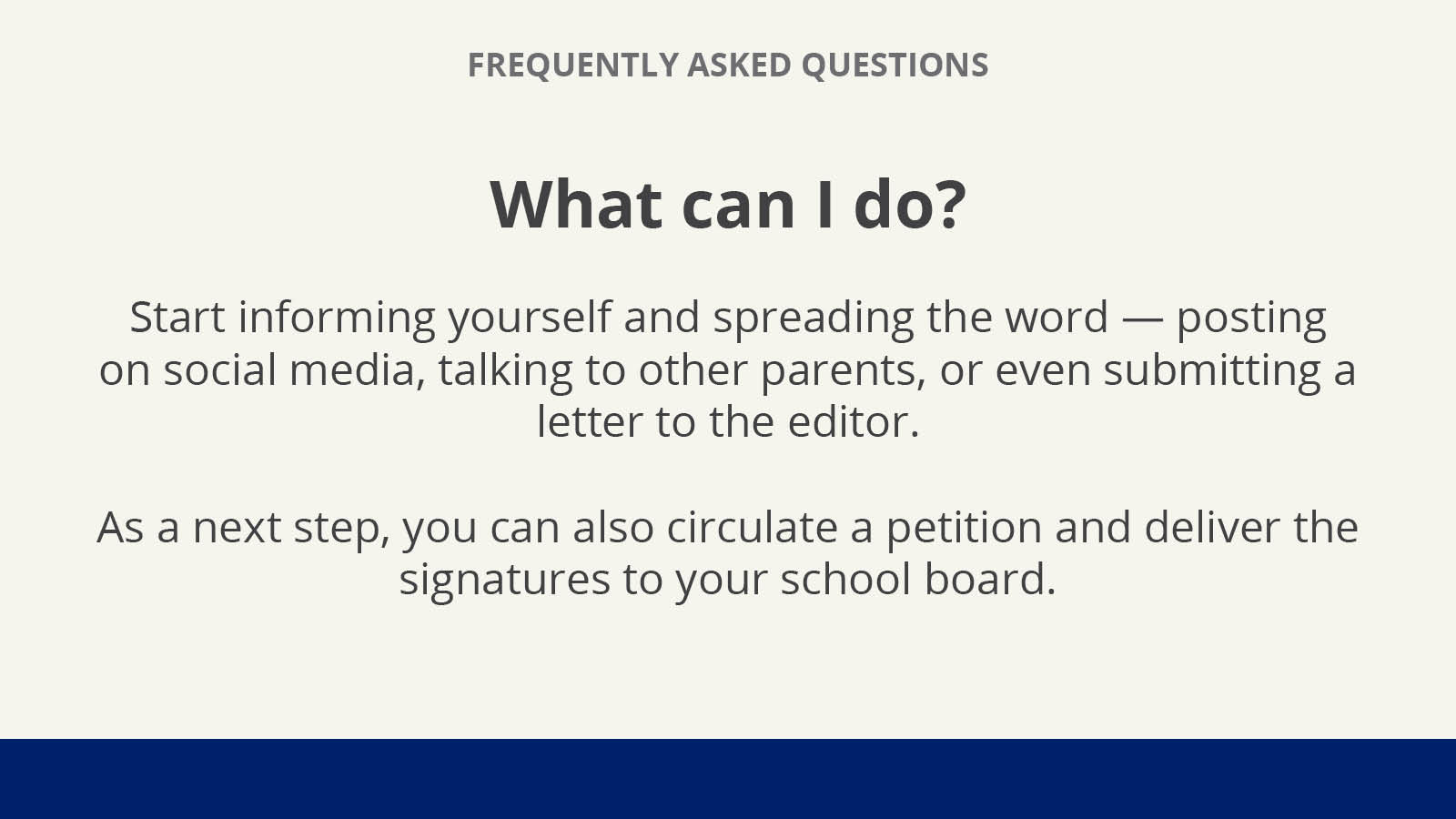
Get the Lead Out: Safe drinking water at school
A toolkit to help families, teachers and school officials get the facts on lead and take action to ensure safe drinking water at school
A toolkit to help families, teachers and school officials get the facts on lead and take action to ensure safe drinking water at school
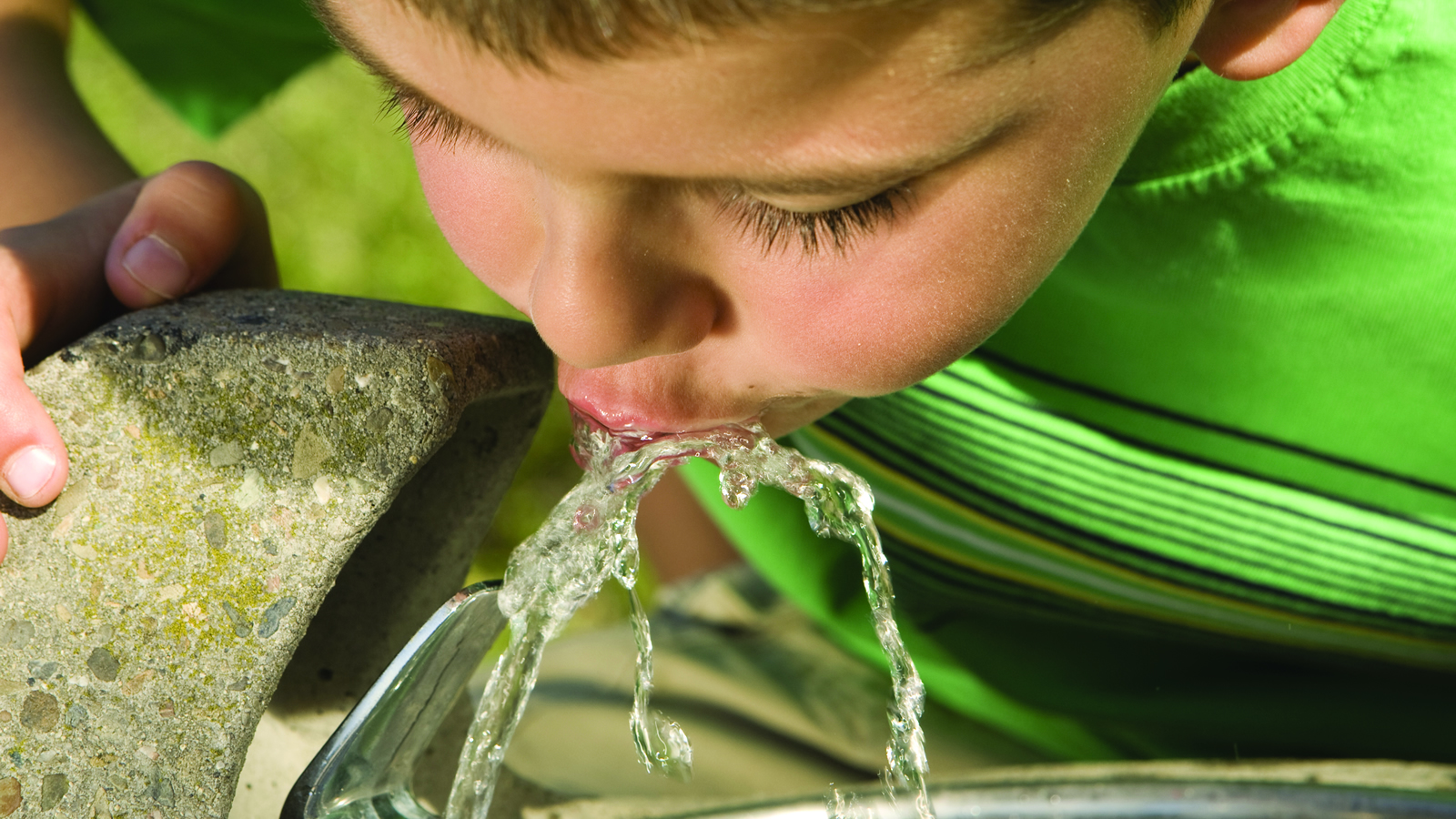
Our children need safe drinking water — especially at school, where they go to learn and play each day. Unfortunately, lead is contaminating drinking water at schools and preschools across the country.
With major funding now available to our schools, we have an unprecedented opportunity to “get the lead out” and ensure safe drinking water for our kids.
Step 1: Get the facts on lead in schools’ water
We now know the toxic threat of lead in drinking water extends to thousands of communities across the country. In fact, lead is even contaminating drinking water in schools and preschools — flowing from fountains and faucets where our kids drink water every day.
Lead is contaminating drinking water at our schools
As more schools test their water for lead, they are finding widespread contamination. This health threat is present in all kinds of schools — including those in rural towns, major cities and affluent suburbs.
Pennsylvania topped the list for elevated lead levels in schools and child care centers required to test under federal law, according to a 2016 USA today survey of EPA data. More recently, of 65 Pennsylvania school districts surveyed, 91 percent of those that tested their water found lead, according to a 2021 report by Women for a Healthy Environment.
In all likelihood, the confirmed cases of lead in schools’ water are just the tip of the iceberg. That’s because until 2014, national standards allowed fountains, faucets, pipes and plumbing to contain a significant amount of lead. (Even some post-2014 faucets can cause contamination.) And wherever lead comes in contact with water, there is a risk of contamination.
For child care centers and small school buildings, the pipe bringing water in from the street might also be made of lead. These lead service lines are a major source of contamination.
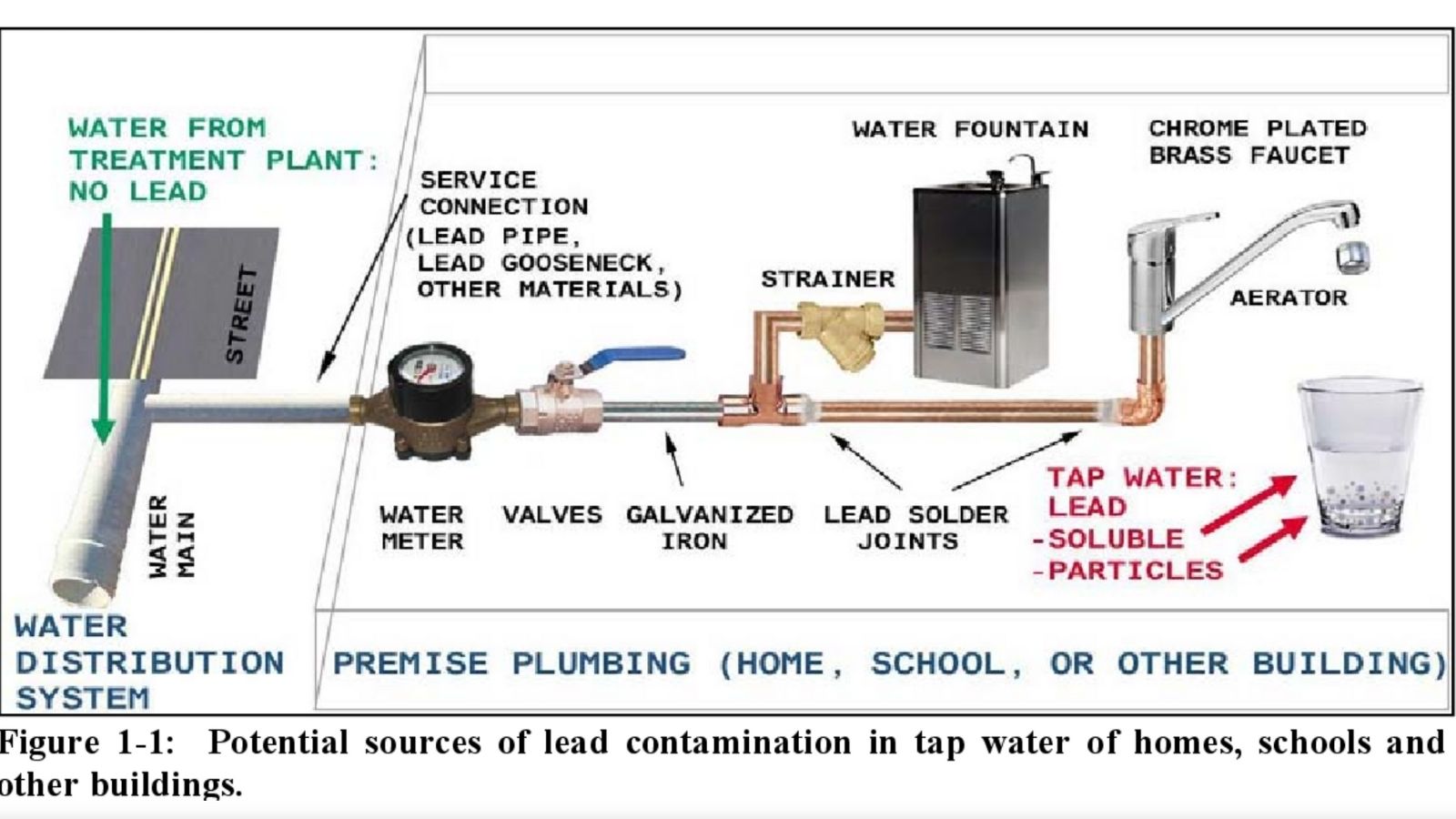
Lead is highly toxic, especially for children.
Lead threatens our kids’ health, especially how they learn, grow and behave:
- “In children, low levels of [lead] exposure have been linked to damage to the central and peripheral nervous system, learning disabilities, shorter stature, impaired hearing and impaired formation and function of blood cells,” according to the U.S. Environmental Protection Agency (EPA);
- Medical researchers estimate that more than 24 million children in America today risk losing IQ points due to low levels of lead; and
- They have also linked low levels of lead to ADHD, antisocial behaviors and depression.
There is no safe level of lead
Lead is so toxic even at low levels that the EPA has set a goal of having no lead in drinking water. The American Academy of Pediatrics says lead in schools’ drinking water should not exceed 1 part per billion.
Step 2: Learn about the best solutions
To ensure safe drinking water, schools should:
- Replace all fountains with water bottle/hydration stations equipped with filters that remove lead. This solution eliminates one common source of lead (fountains) and captures lead coming from plumbing or pipes. Moreover, kids tend to drink more water when they have access to hydration stations, so there’s an added health benefit to this solution. These hydration stations should be installed at a ratio of 1 per 100 students and staff. They should have filters certified to meet NSF/ANSI standards 53 for lead reduction and 42 for fine particulate, and indicator lights so parents and teachers can see when the filters need to be replaced.
- Install point of use filters on any other taps used for drinking water, cooking or beverage preparation. Especially where under-sink filters are used, lead-bearing faucets should be replaced as well.
- Shut off taps where tests have detected lead in the water until they are fitted with lead-removing filters.
- Get the lead out. Lead service lines should be removed as soon as possible at any child care center or school building that has one. Other lead-bearing fixtures or plumbing should be replaced over time where feasible. New school construction or renovation should use taps and fixtures that meet the strictest lead-free standards, and include adequate hydration stations for students and staff.
- After preventive steps are taken, test taps to ensure that lead levels do not exceed 1 part per billion, the limit recommended by the American Academy of Pediatrics.
It is crucial to take these steps at all taps used for drinking or cooking, not just those in which tests have confirmed the presence of lead. Because lead testing is highly variable, the water from a fountain or faucet can be “highly hazardous” even if several samples fail to detect lead. As long as there is lead in the plumbing or pipes, any tap without a filter can serve lead-laced water to our kids.
Step 3: Do the math
Here’s the great news: we can prevent lead contamination with just a small fraction of the nearly $110 billion in federal stimulus funds that school districts are now receiving. These Elementary and Secondary School Emergency Relief (ESSER) funds can be used to reduce “exposure to environmental health hazards,” such as lead contamination of drinking water. You can see how much of this funding your school district is expected to receive here. (See the “ESSER III” tab.)
Hydration stations with filters cost roughly $3,000 (including installation), based on the experience of school districts in Michigan and Massachusetts. Point of use filters for faucets typically cost less than $100 each.
Other federal funding sources include:
- The bipartisan infrastructure bill, which provides schools with an additional $200 million over 5 years to prevent lead contamination of drinking water. (See Section 50110)
- An EPA grant program that has awarded lead reduction funding to schools.
- The American Rescue Plan Act (ARPA), which has provided billions of dollars that state and local governments can use for drinking water infrastructure, including efforts to prevent lead contamination.
State and local resources can also be used to safeguard drinking water at school.
With this unprecedented array of funding available, school districts have an incredible opportunity to ensure safe drinking water for our kids.
Step 4: Work together to get the lead out
School officials will be more likely to take action if you get many people involved.
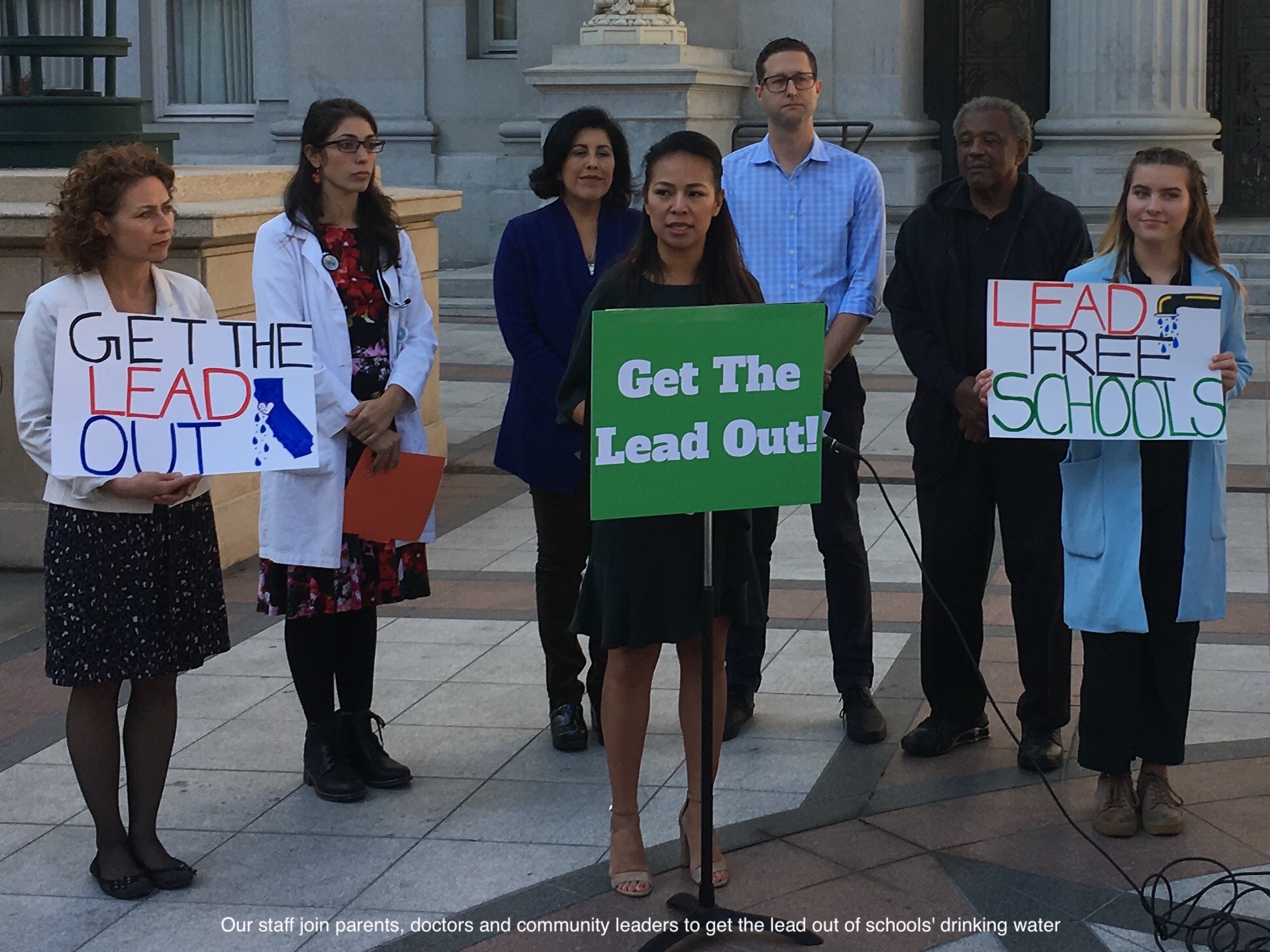
Here are some ways to get started:
Share this toolkit with your local Parent Teacher Association (PTA) or Home and School Association (HSA), so you can work together to advocate for safe drinking water at school.
Circulate a petition that you can present to your school board at its next meeting. Download a sample petition.
Post on social media to raise awareness and build support. Download sample social media posts.

As @[yourtown] goes #backtoschool, we know kids run better unleaded. Help #GetTheLeadOut of water at our schools.

Contaminated water @[yourtown] schools? Time for @[LOCAL DECISIONMAKER] to #GettheLeadOut. [INSERT LINK TO YOUR LOCAL PETITION]

There’s no safe level of lead. As our children head #backtoschool, get the facts on safe drinking water from @EnvAm @uspirg [LINK TO TOOLKIT]

As our kids head #backtoschool, here’s a quick homework assignment for parents: watch this video about lead in schools’ drinking water. https://bit.ly/2n4R4LM
Ask community leaders to join your call for clean water at school. Doctors, nurses, teachers, local officials and community organizations can add powerful voices to your effort.
Study for the test. Even without tests, we know schools’ water is at risk due to lead in fountains, faucets and plumbing. If your school has tested for lead, see the resources below to help you understand the results.
Submit a letter to your local paper. Download a sample letter to the editor.
Step 5: Don’t stop until your kids’ school gets the lead out
Contact us at [email protected] for further support of your efforts to secure safe drinking water at school.
Water bottle stations with lead-removing filters
Here are three examples of water bottle stations with filters certified to remove lead: Elkay, Global Industrial and Halsey Taylor
School districts working to get the lead out
Here are three school districts taking action to prevent lead contamination: Portland (OR), San Diego and Detroit
Understanding lead test results
Experts: lead testing is inherently variable, so even several tests do not assure safety without filters
EPA never said 15 ppb is a safe level of lead in water
Convert lead test results from ug/dL (micrograms per deciliter) to parts per billion
Topics
Find Out More

A River Reborn
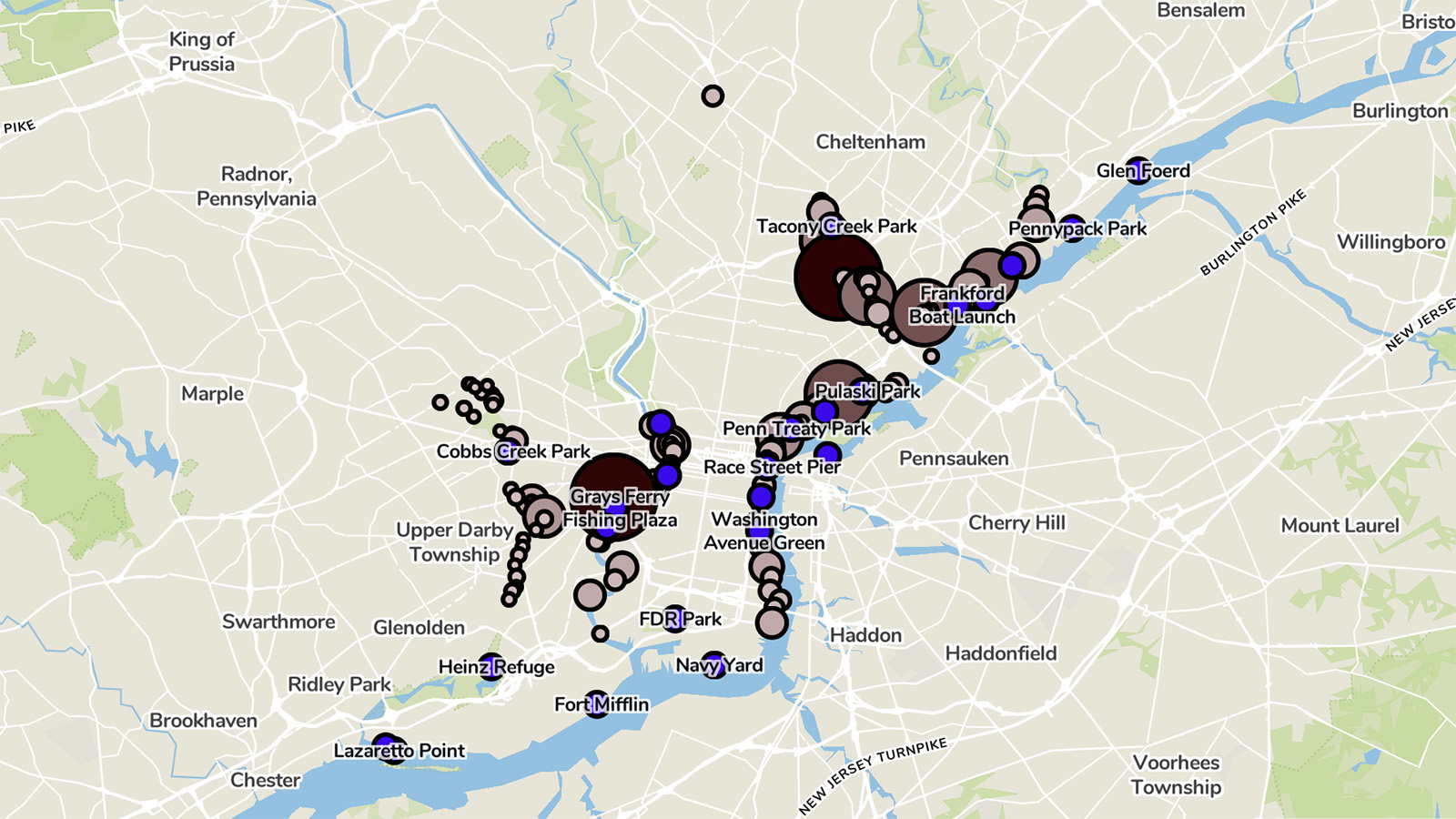
Sewage Pollution in Philadelphia
